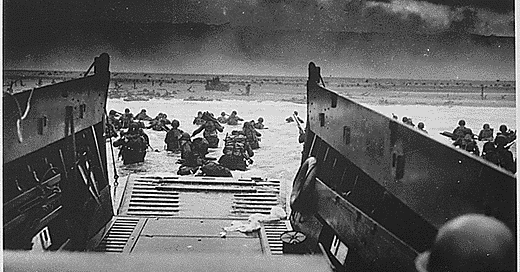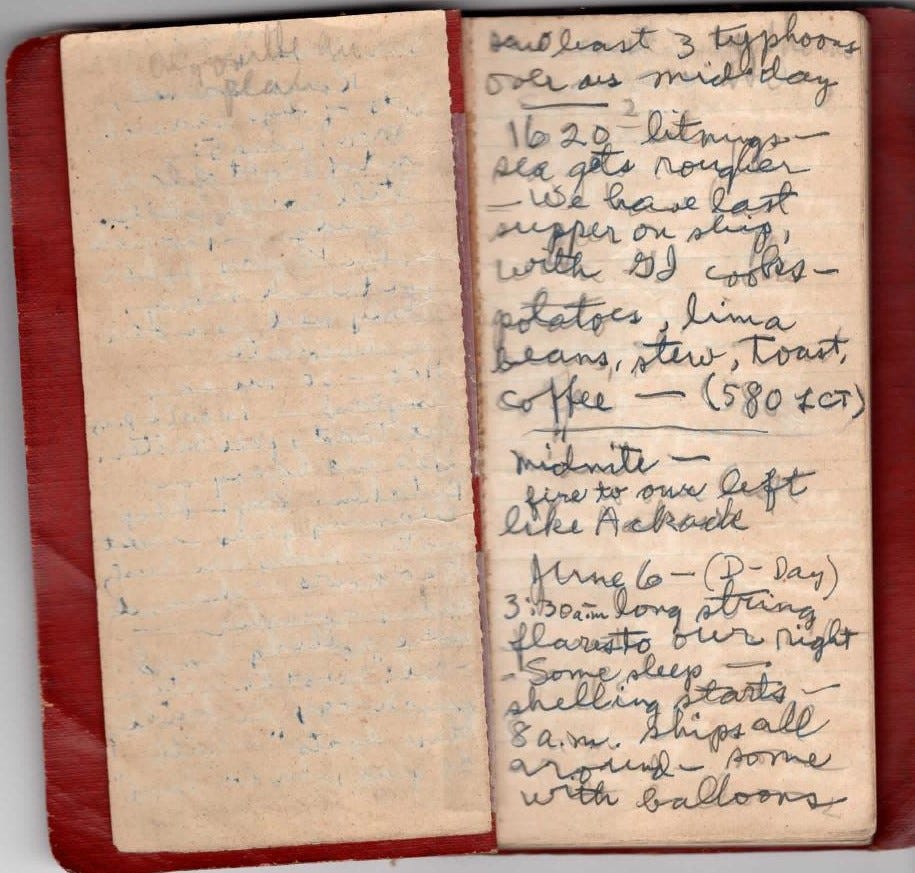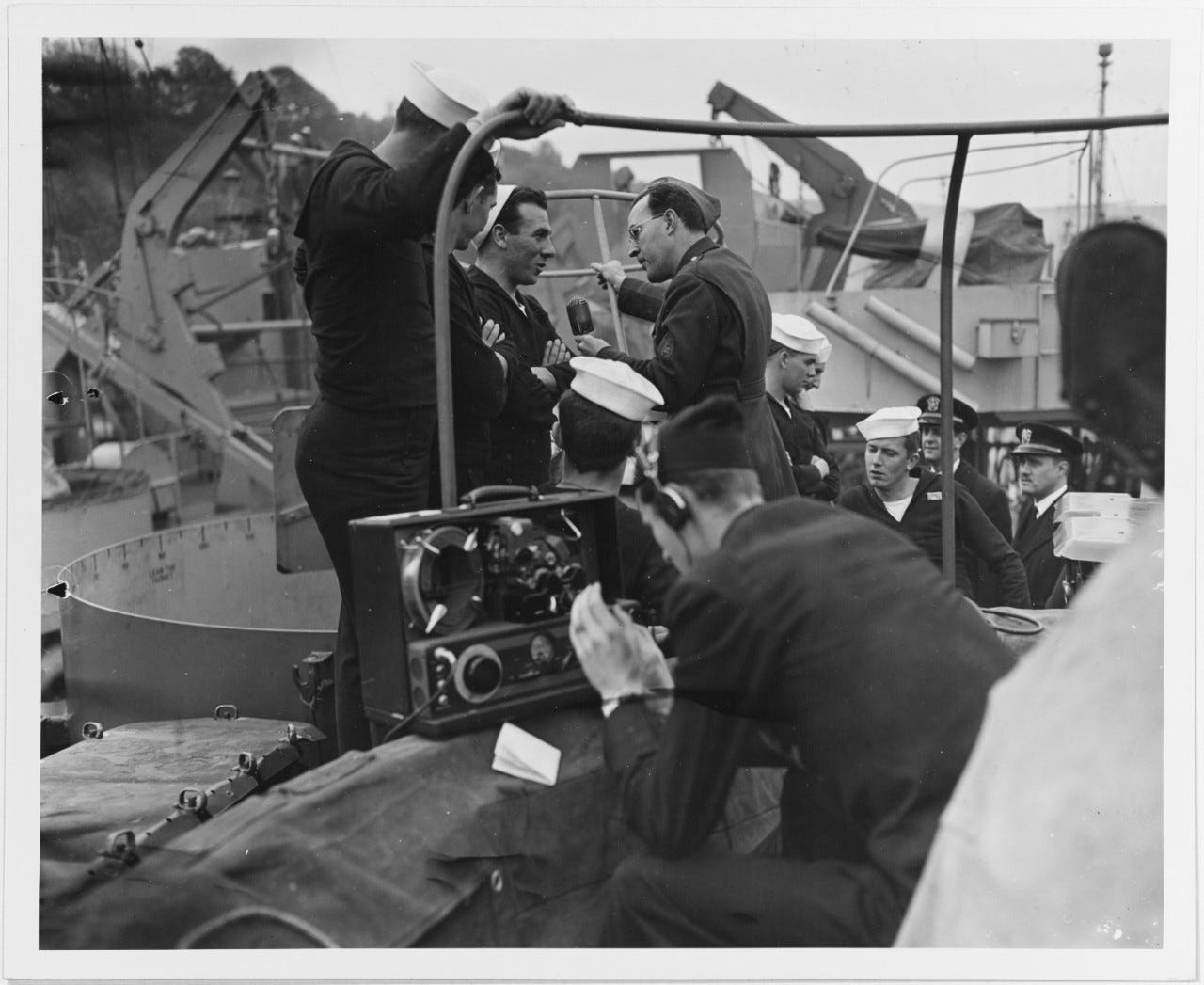D-Day: Correspondents covering the Day of Days
Seventy-nine years ago today, Allied troops landed in Normandy. It was the most anticipated moment of the war in Europe, and the most widely covered.
Here’s a rundown of how June 6, 1944 unfolded from the perspective of the men and women charged with telling the D-Day story to the world:
Shortly after midnight, the select group of correspondents accompanying the airborne troops began landing in France. William Walton of Time jumped with the U.S. 82nd Airborne, Robert Reuben of Reuters with the 101st, and Leonard Mosley of Kemsley Newspapers with the British 6th Airborne. Wrote Reuben:
We were in France! It was hard to believe. I patted the ground, very much thrilled and feeling somewhat smug. I wished the whole world could see me — sitting in a field in France, surrounded by the enemy, but undetected. Soon, the world would know that the long-awaited invasion had begun this night.
Around 3:30 a.m., the BBC’s Chester Wilmot landed near Ranville in a British glider. His recorded broadcast from that morning is among the legendary correspondent’s most memorable work of the war.
Around 6:30 a.m., Kenneth Crawford of Newsweek went ashore with the opening wave of troops on Utah Beach. His supposedly waterproof watch stopped when he left his landing craft and waded to shore.
Shortly after 6:30 a.m., Berlin radio announced the invasion had begun, setting off a flurry of activity at broadcast outlets as American and British networks put into motion their plans for the long-anticipated day.
At 7:10 a.m., the 2nd Rangers landed at Pointe du Hoc. Stars and Stripes correspondent Lt. G.K. Hodenfield would accompany them on their remarkable D-Day mission.
Around 7:30 a.m., Ernest Hemingway of Collier’s watched as the LCVP on which he witnessed the invasion disembarked troops at Omaha Beach.
Around 7:40 a.m., U.S. Coast Guard Chief Photographer’s Mate Robert F. Sargent captured his iconic photo “Into the Jaws of Death” from a landing craft off Omaha Beach.
At 8 a.m., legendary Associated Press correspondent “Beachhead Don” Whitehead and veteran Chicago Tribune reporter Jack Thompson went ashore at Omaha Beach.
Around 8:25 a.m., Robert Capa is ashore at Omaha Beach and in the process of taking the best-known photos of D-Day for Life.
At 8:30 a.m., Reuters correspondent Montague Taylor sent the first report of D-Day via a homing pigeon named Gustave. The bird would arrive at a Royal Air Force base at 1:46 p.m.
Around 8:40 a.m., Sgt. W. Norman Clague of the British Army’s No. 5 Army Film and Photographic Unit went ashore on Sword Beach. Clague’s footage from the Channel crossing and the Normandy landings would become a key part of the historical record, but he would not survive the week.
At 9:06 a.m., Doon Campbell of Reuters landed on Sword Beach with Lord Lovat’s Commandos. He would spend that first night in a ditch.
At 9:32 a.m., SHAEF press chief Col. R. Ernest Dupuy broadcast the contents of Communique No. 1, officially announcing the landings in France. American networks carried his broadcast, while the BBC aired John Snagge reading the same brief message at the same time.
At 10:18 a.m., Correspondent Wright Bryan’s eyewitness report from his flight over the invasion coast aboard a transport plane aired on NBC.
At 10:50 a.m., United Press correspondent Doug Werner landed on Utah Beach, scribbling notes in a small notebook with a red leather cover.
Late in the morning, Martha Gellhorn of Collier’s left the Ministry of Information after the official briefing and began formulating a plan to get to Normandy without official authorization.
Around 2:30 p.m., ACME Newspictures photographer Bert Brandt went ashore for about 30 minutes, shooting the photos that would be the first to hit the wires.
At 2:40 p.m., the first D-Day report from correspondent Merrill Mueller, one of four men assigned to Gen. Dwight D. Eisenhower’s forward headquarters, aired on NBC.
Throughout the day, Ernie Pyle and the other correspondents stuck aboard ships in the Channel strained to make out what was happening on the beaches. America’s preeminent war correspondent finally got ashore the next day.
At 11:55 p.m., Blue Network correspondent George Hicks began recording his seminal broadcast aboard the USS Ancon.





